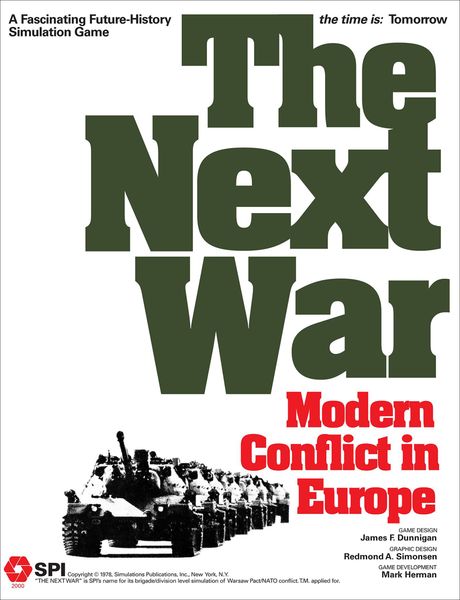The Next War: Modern Conflict in Europe (1978) Board Game
The Next War: Modern Conflict in Europe is a board game released in 1978, designed by Redmond A. Simonsen and published by SPI (Simulations Publications, Inc.). The game is set in a hypothetical modern conflict in Europe, focusing on strategic warfare and military tactics.
Game Components of The Next War: Modern Conflict in Europe
How To Setup The Next War: Modern Conflict in Europe
Setting up the game involves laying out the large map sheets that cover the central European front from Denmark to Italy. Players need to organize the extensive set of counters, which represent various military units, and place them on their respective starting positions as indicated in the scenario being played. The rulebook and scenario briefings provide detailed instructions on how to set up each scenario, including the distribution of forces and initial conditions such as weather and supply lines.
Gameplay Mechanics and Game Objective
– Ground, air, and naval operations
– Weather and supply lines management
– Chemical or nuclear warfare options
– Airborne troops and amphibious landings
– Special forces and electronic warfare
– Complex rules for air and anti-aircraft units
– Campaign game involving three scenarios covering the first 60 days after an invasion
Player Experience
Playing **The Next War** is a deeply immersive and complex experience. The game is renowned for its realism and comprehensive rules, making it a favorite among serious wargamers. Each turn can be lengthy due to the detailed calculations required for attacks and the management of various military assets. The game demands a significant amount of time and effort but offers a highly realistic simulation of modern conflict.
Pros
Cons
Personal Thoughts on The Next War: Modern Conflict in Europe
**The Next War** is tailored for serious wargamers who enjoy detailed and realistic simulations of military conflicts. It is not a game for casual players due to its complexity and the time commitment required. However, for those who are willing to invest the time and effort, it offers a rich and rewarding gaming experience that simulates the intricacies of modern warfare during the Cold War era.
We are supported by our audience. When you purchase through links on our site, we may earn an affiliate commission, at no extra cost for you. Learn more.

